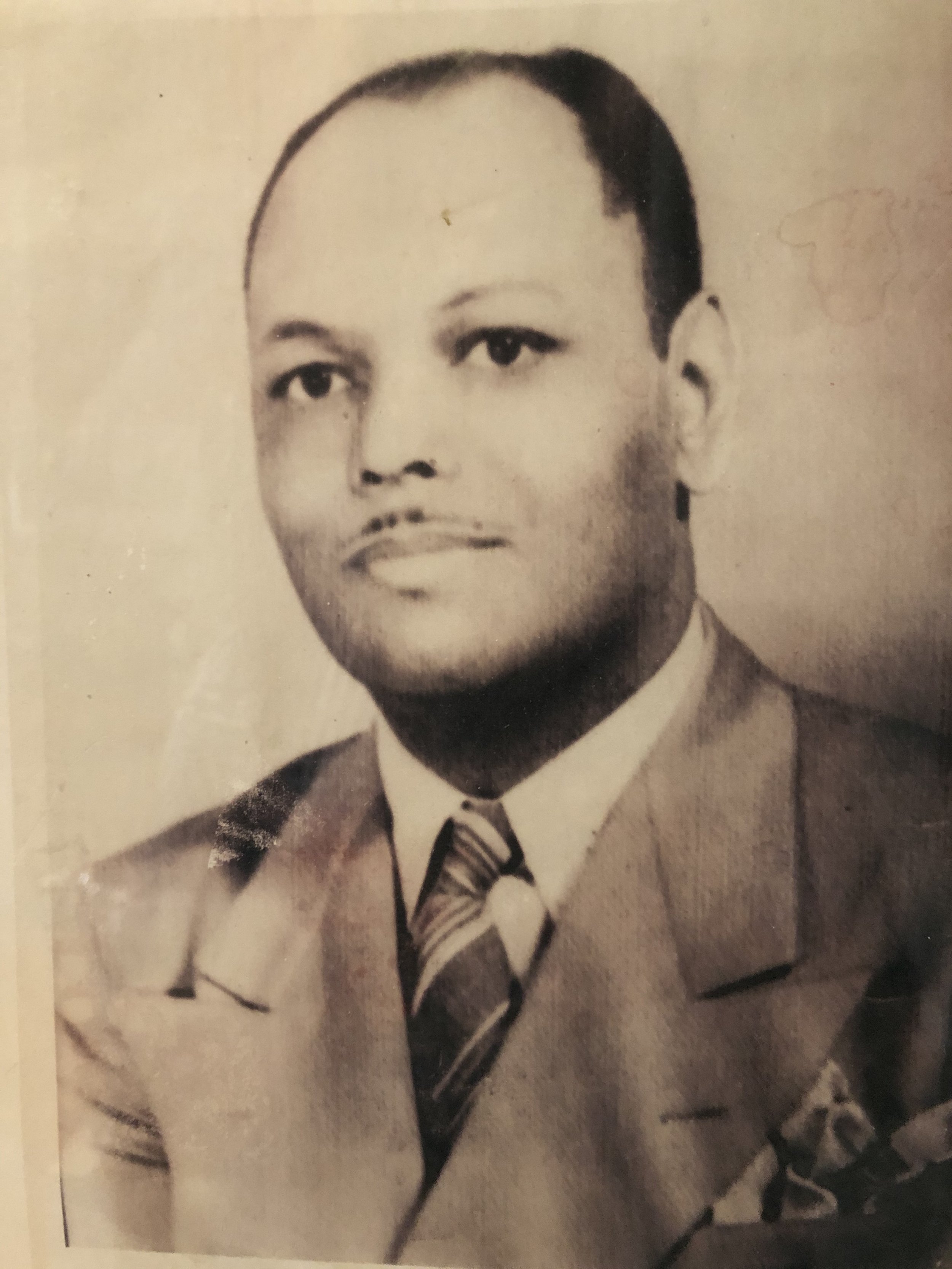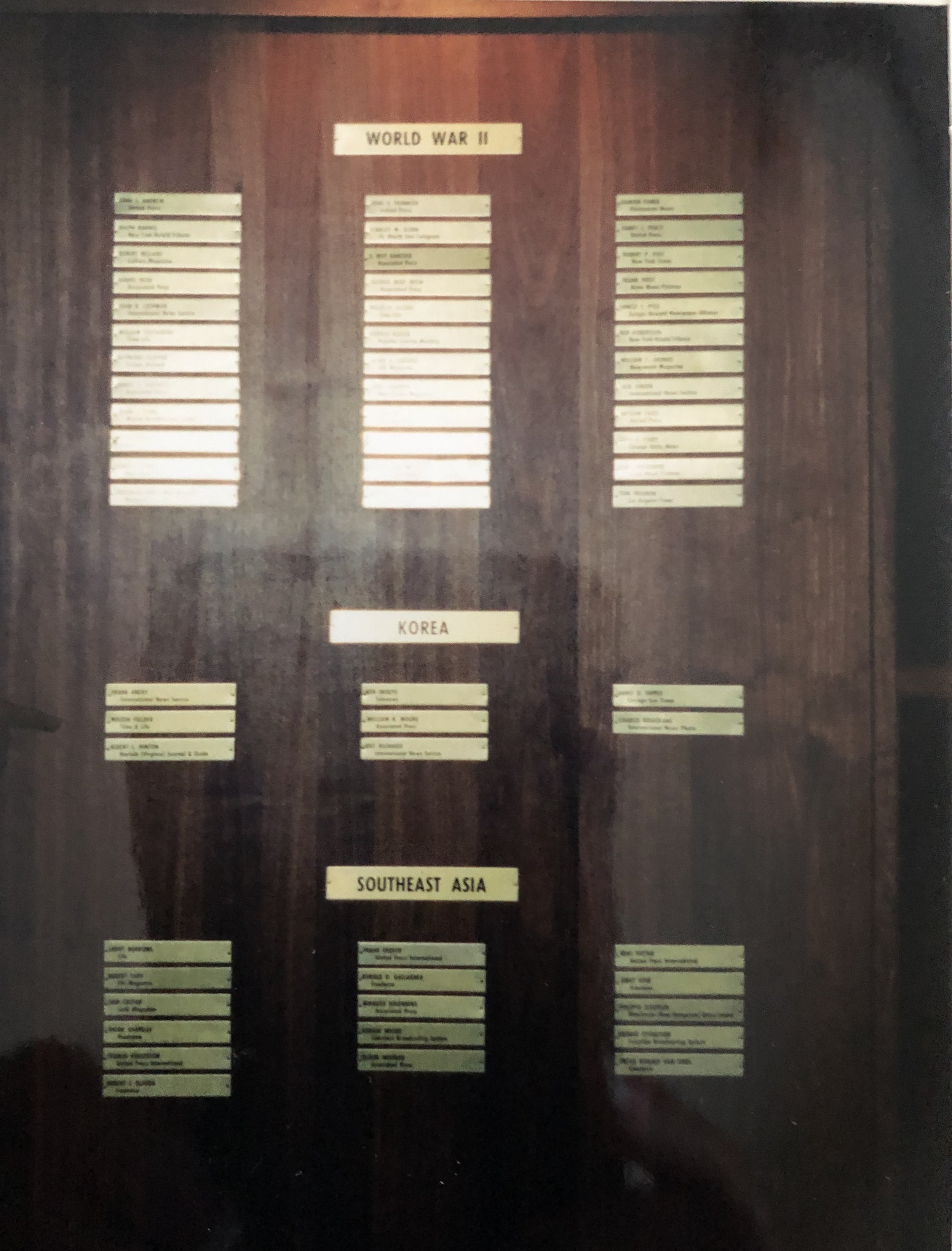
The Newspapermen’s Newspaperman
Korean War Correspondent
Norfolk Journal & Guide Associate Editor
Family Man
“In order to fulfill its proper destiny, the newspaper —in particular the negro newspaper— must be an active and perpetual editorial champion of every cause which has as its objective the civic, educational, cultural and religious betterment of the community of which it is a part. In no other way can it hope to fulfill its destiny.” (Hinton, 1947)''
Albert L. Hinton''', also known as Al Hinton, (1904 - July 27, 1950), was an African American journalist for the New Journal and Guide |Norfolk Journal and Guide in Norfolk, Virginia, United States, notable for being the first African American War Correspondent killed in the Korean War or in a 20th century war.
Hinton was a correspondent for the National Newspaper Publishers Association |National Negro Publishers Association and held the position of associate editor at the Norfolk Journal and Guide before his death.
Personal: Albert L. Hinton was married to Dovey V. Collins. They had four children… Albert Jr., Lelia, Carl and Gail.
Career: Throughout his career he served as a city editor, managing editor, and associate editor at the guide. He won a Wendell Willkie award for his stories on the condition of schools in Princess Anne County, Virginia.
1950
Location: Japan - Hinton died south of Tokyo in a plane crash. - lat_deg=35 lat_min=34 lat_sec= lat_dir=N lon_deg=139 lon_min=58 lon_sec= lon_dir=E -Tokyo - lat_deg=37 lat_min=34 lat_sec= lat_dir=N lon_deg=126 lon_min=58 lon_sec= lon_dir=E In July, 1950, Hinton planned on covering the fighting in Korea and attended a Tokyo Correspondents Club.
He was a passenger on a Douglas C-47 Skytrain along with three other war correspondents, James O. Supple of the Chicago Sun-Times, Maximilien Philonenko of Agence France-Presse, and Stephen Simmons of the Hilton Press and London Picture Post.
The plane was a United States Air Force transport plane. It departed from Tokyo's Haneda Airport at 4:05 AM on July 27, 1950. In order to get to Korea, the flight would have gone to an air port on Japan's southernmost island of Kyushu. The plane disappeared twenty five minutes after leaving Haneda airport and was found the next day by Japanese fishermen eighty miles south of Tokyo, in the sea. The wreckage was close to Izu Ōshima, where a helicopter had been sent from to look for survivors. The C-47 flight had twenty six passengers and there was only one survivor, a Nisei sergeant.When Hinton, Supple, Philonenko, and Simmons died, the war had been going on for a month. On June 25, 1950, soldiers from North Korea had crossed the 38th parallel and invaded South Korea. Dean Acheson notified Harry S. Truman about the invasion.
Awards and Memorials
In June, 1951, Frank Pace accepted a Valor Award for Hinton. It was forwarded to his family. The National Headliner's club presented posthumous awards to eight other war correspondents whom had lost their lives in Korea.
On August 17, 1951, a national committee of fifteen African American newspapers formed an Albert L. Hinton Memorial Fund. The fund aimed to perpetuate Hinton's memory, get journalists to recognize they shared a common cause, and promote the working press.
Five years after his death, Albert Hinton was honored by the United States Department of Defense (Pentagon - Correspondence Corridor). On August 19, 1955, the Defense Department's honor gallery added the photographs of twelve war correspondents who had lost their lives in the Korean war. There was no ceremony, and the pictures were hung on the same wall as forty-four newsmen who had been killed during World War II.
On November 12, 1956, Isaac D. White, then a lieutenant general, presented a plaque to the Foreign Correspondents Club. The plaque honored the memory of seventeen newsmen who had been killed in Korea. Hinton was among those honored in the plaque.
U.S. Department of Defense (Pentagon - Correspondence Corridor)
References
*[[Korean War]<ref name="nc">{{cite news|publisher=The Carolina Times|title=Albert Hinton|date=August 5, 1950}}</ref> He was the first black war correspondent to lose his life in an assignment.]
<ref name="arkansas51">{{cite news|title=PRESS FOLK FORM MEMORIAL FUND FOR A.L. HINTON|publisher=Arkansas State Press|date=August 17, 1951|page=5}}</ref>
<ref name=nytimes50>{{cite news|title=C-47 FALLS IN SEA WITH 26 OFF JAPAN: Four Reporters Believed Lost in Crash--One Survivor and Wreckage Sighted|publisher=New York Times|date=July 28, 1950|page=4}}</ref>
<ref name="cia">{{Cite web|url=https://www.cia.gov/news-information/featured-story-archive/2015-featured-story-archive/korean-war-intelligence-success-or-failure.html|title
=The Korean War Controversy: An Intelligence Success or Failure? — Central Intelligence Agency| website=www.cia.gov}}
</ref> Five days later, Truman authorized MacArthur to commit ground troops to Korea. On July 5, 1950, American troops fought the North Koreans at Battle of Osan.
<ref name="nj">{{Cite web|url=https://www.nj.gov/military/korea/factsheets/tfsmith.html|title=Task Force Smith|website=www.nj.gov}}
</ref> By the time that Hinton had died, the United States had been fighting in the war for a few weeks.
<ref name="kansas51">{{cite news|title=HEADLINERS CITE ALBERT HINTON|publisher=The Plain Dealer|date=June 15, 1951|page =1}}</ref>
<ref name="arkansas51"/><ref name=nytimes55>{{cite news|title=MEMORIAL TO NEWS MEN: Pictures of 12 Killed in Korea Hung in Defense Gallery|publisher=New York Times|date=August 20, 1955|page=17}}</ref>
<ref name=nytimes56>{{cite news|title=NEWSMEN HONORED: Plaque Offered for Those Killed in Korean War|publisher=New York Times|date=November 13, 1956|page=73}}</ref>





